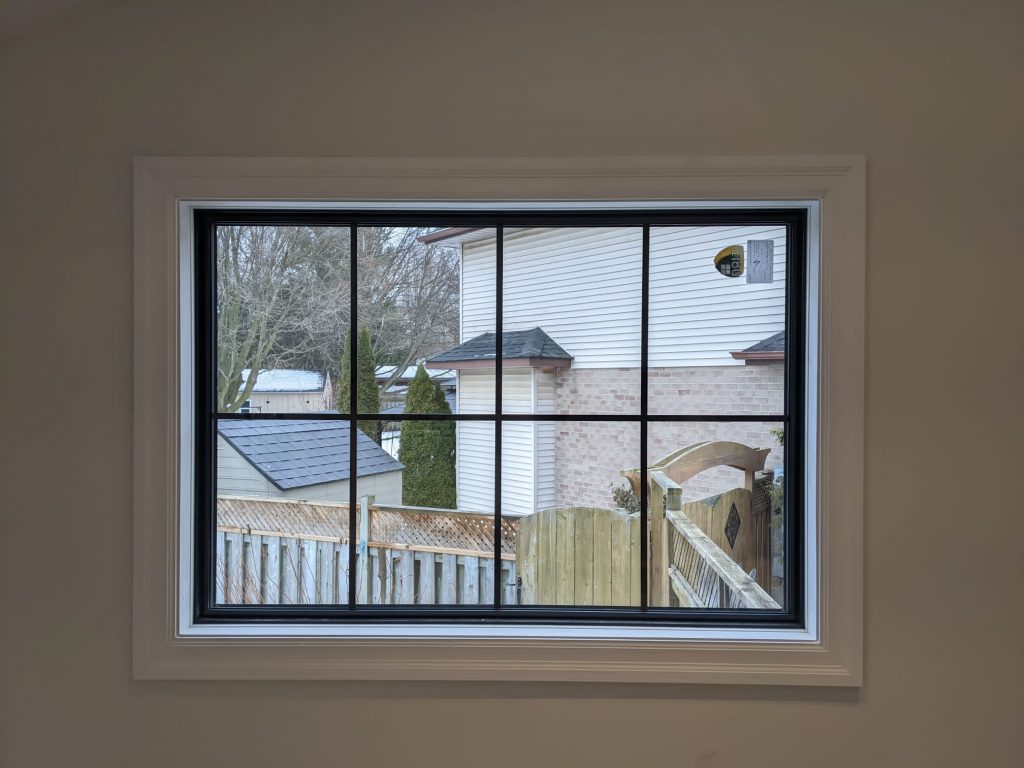
We get asked all the time, “What is the difference between Fiberglass windows and Vinyl Windows?” as well as: “I’ve heard of Fiberglass windows, are they really worth it?”
If you are considering a new construction home or renovating your current home, you will have a healthy number of choices for new-construction windows or replacement windows. There are a number of different materials used to produce window frames. Wooden windows are still available, but windows framed with aluminum, vinyl, fiberglass (or fiberglass composite) are also quite popular.
The choice comes down to vinyl windows or some variation of fiberglass windows. How do these materials compare when used for window construction and which one is a better fit overall?
Vinyl Windows
Vinyl windows are made from extruded uPVC (unplasticized polyvinyl chloride) as the base material. As required, these windows may be reinforced with metal, in the window frame, to strengthen their internal structural to support larger window openings or heavier sealed glass units. Vinyl windows tend to have a larger window profile as a result of the lack of strength in the material.
Vinyl windows are very popular with vinyl windows making up more than half of all residential window sales.
Affordability is the main driver of vinyl-framed windows as, on average, they cost less than half of wood-framed windows. Moreover, energy efficiency is a key element of Vinyl windows’ attractiveness. Vinyl windows are fabricated using hollow cavities that trap air which improves the R-value of the windows. While Vinyl windows are popular, there are limitations to the size of openings they can support.
Vinyl windows can be installed without paint; however, the growing trend in the market is for windows to be painted. If buying windows that are painted, be sure to enquire as to the warranty on the paint as low end window providers will use sub par paint on their windows, which tends to crack and peel over time.
Vinyl Window Advantages
- Affordable
- Energy Efficient
- Popular
Vinyl Window Disadvantages
- Cannot support larger window openings
- Thicker frame size due to material weakness
Fiberglass Windows
Recently, Fiberglass windows have emerged as a successor to the vinyl window movement.
Fiberglass lineals are created in a process called pultrusion. This is where resins are mixed with strands of glass and pulled through a die. The result is an extremely strong material that is used in many commercial window applications such as curtain wall, but also in recreational use such as snowboards or skis.
Fiberglass material resists swelling, rotting, and warping making it the perfect choice for long-lasting durability coupled with exceptional beauty. Fiberglass frames are as strong as low carbon steel and 8x stronger than vinyl. In climates with fluctuating temperatures this benefit keeps the window stable and weather tight, reducing the risk of seal failures and air leakage into your home. Simply put fiberglass frames are superior.
Fiberglass windows have a longer useful life expectancy than vinyl.
Fiberglass windows also can accomplish the same level of energy-efficiency with smaller frames with a lower profile, making fiberglass frames a more attractive option. Fiberglass window frames can be made much more narrow that vinyl windows, allowing for more glass and less frame. Fiberglass windows are nearly as strong as aluminum, but as energy efficient as vinyl which, if you have the budget, makes them the ideal choice for your home.
Fiberglass window frames expand at virtually the same rate as glass, unlike all other framing materials that expand far greater than the glass they surround. They maintain a tight seal, so they’re resistant to leaks and window failures that can compromise energy efficiency and long-term performance. . Stronger than wood and occupying a price range between vinyl and wood, fiberglass-framed windows are an increasingly popular choice.
Because Fiberglass windows are relatively new to the market, there are a limited number of suppliers resulting in longer lead times and higher prices for these windows. While they are beautiful, you will be waiting a while for them to arrive at a home near you!
Fiberglass Window Advantages
- Strength and Durability
- Energy Efficiency
- Attractiveness
Fiberglass Window Disadvantages
- Long Lead time
- Must be painted
- Higher cost
- Very rigid to install
Conclusion:
If you are considering replacing your windows, first think of the budget you can afford. A good measure is to use approx. $1K per opening. From there, you can choose to look at either saving some money using Vinyl windows or go with the higher value option of Fiberglass windows.
